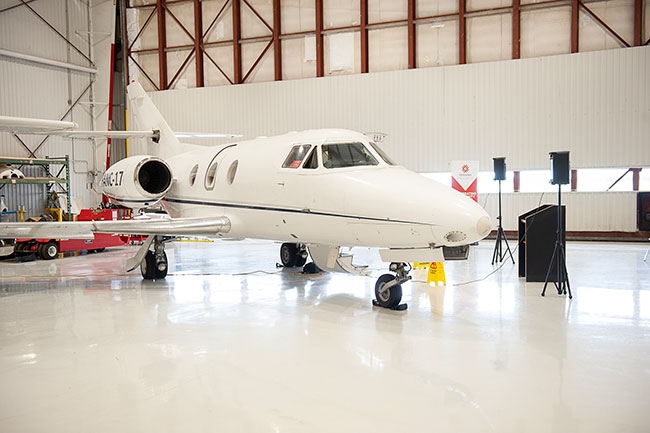
News
Labour crisis in Canadian aviation
As many of you are well aware, one of the greatest challenges currently facing our industry is the ongoing labour shortage. This shortage has reached such a level of concern that many companies and organizations call it a labour crisis. It has spurred the creation of career initiatives in an effort to correct the trend, including partnerships between post-secondary institutions and corporations to more directly streamline graduates into the workforce.
July 24, 2018 By Tim Anderson
 Fanshawe received a Falcon 10 donation from Tricor
Fanshawe received a Falcon 10 donation from Tricor Many companies are offering increased wages and benefits to entice current and potential employees to join the workforce on a permanent basis. The current industry is an employee’s market in a way that we haven’t witnessed in a long time, if ever. These new initiatives are a welcome step, but I would like to discuss the viewpoint that this shortage was predicted many years ago and perhaps should never have reached its current crisis level. More alarming, the root problem that existed then, still exist now.
When I entered aviation nearly 20 years ago, my fellow pilot trainees and I often heard about the imminent pilot shortage. Over the years, the imminent nature of this shortage never fully materialized. It reached a point where it was chalked up as a sales pitch by flight schools and usage of the term “because of the pilot shortage” became a punch line. Today, we have come to the realization that this imminent shortage is now reality and it is no laughing matter.
Reflecting on the start of my own Aircraft Maintenance Engineer (AME) training, I remember being bombarded with reminders of the approaching pilot shortage, but there was hardly any mention of a possible AME shortage. How could one part of the industry be so assured of a labour shortage, yet another sector be blindsided by the same issue? In my own observations, I believe one reason for this blind spot, and a major factor in explaining our current situation, is the mindset of exclusion and apathy that is ever present in our industry. We haven’t made it a priority to attract newcomers to choose aviation, and in particular non-pilot positions, as an attractive and rewarding career. This mindset of apathy and exclusion was prevalent back then and still exists today. It needs to change in order to end the labour shortage and ensure long-term stability of our industry as a whole.
The job of integrating new pilots into the ranks is relatively easy when the idea of flying an aircraft captures the imagination of so many. But how do we attract young and eager mechanics-in-training when our idea of the greasy mechanic is too constantly perpetuated by the macho attitudes of the staunch old guard? Over the years, I have watched young people enter the industry only to be treated with negative, unwelcoming and unprofessional attitudes. Many times, newcomers are made to feel inadequate from day one, that they have not done enough, and that it will take many more years before they can become true AMEs, pilots or most other aviation roles.
We understand this industry is not an easy one to break into. It requires years of hard work and investment to achieve even apprentice AME or right-seat status. For those who do manage to find an entry-level position, they are often greeted with pessimistic attitudes that demoralize them and often result in the individual prematurely leaving the industry. By no means am I suggesting we coddle or falsely appease new members of our industry. Aviation can be a challenging career that presents tough-working conditions, high levels of stress and responsibility. To hide or downplay these realities benefits no one, but to add to that stress by creating a toxic work environment has been a lesson in human factors time and again.
We need to embrace, welcome and encourage new members into our industry, and do so in a way that opens their eyes to the realities while supporting them as they find their way. The AME to apprenticeship and captain to first officer relationships have always been built on the mentor model, but somewhere along the way, we’ve lost some of this tradition. Egocentric and apathetic attitudes get in the way of this model of training and if we continue with this old-boy’s-club mentality, then this crisis is going to get worse before it gets better. For example, had the practice of gender equality in the workplace been adopted even a generation sooner, we would not be in the position we find ourselves now.
We need to create a toxic-free work environment that is welcoming. I call on experienced AMEs and pilots to be more open to working with our new members. Welcome, encourage and mentor them and demonstrate the positive side of aviation with all of the opportunities that it has to offer. If we endeavour to make them a part of the team and share our knowledge and experience with them, we can build on the lessons of the past to strengthen our future.
Tim Anderson, AME M1, M2, is a commercial, multi IFR pilot; co-owner of Anderson Aviation; and a professor at Fanshawe’s Norton Wolf School of Aviation Technology.